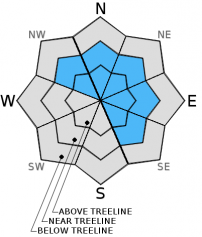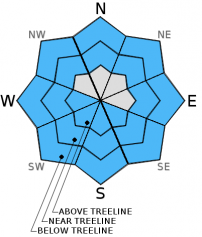| Tuesday | Tuesday Night | Wednesday | |
|---|---|---|---|
| Weather: | Mostly cloudy with a slight chance for isolated snow showers in the afternoon | Mostly cloudy becoming partly cloudy | Partly cloudy to mostly sunny |
| Temperatures: | 40 to 46 deg. F. | 23 to 29 deg. F. | 43 to 50 deg. F. |
| Mid Slope Winds: | West | Northwest | East |
| Wind Speed: | 15 to 20 mph with gusts to 30 mph | 10 to 15 mph in the evening becoming light | Light in the morning increasing to 10 to 15 mph in the afternoon |
| Expected snowfall: | 0 | 0 | 0 |
| Tuesday | Tuesday Night | Wednesday | |
|---|---|---|---|
| Weather: | Mostly cloudy with a slight chance for isolated snow showers in the afternoon | Mostly cloudy becoming partly cloudy | Partly cloudy to mostly sunny |
| Temperatures: | 34 to 42 deg. F. | 20 to 27 deg. F. | 41 to 48 deg. F. |
| Ridge Top Winds: | West | North | East |
| Wind Speed: | 25 to 30 mph with gusts to 45 mph decreasing to 15 to 20 mph with gusts to 30 mph in the afternoon | 10 to 15 mph with gusts to 25 mph | 15 to 20 mph with gusts to 30 mph in the afternoon |
| Expected snowfall: | 0 | 0 | 0 |

























